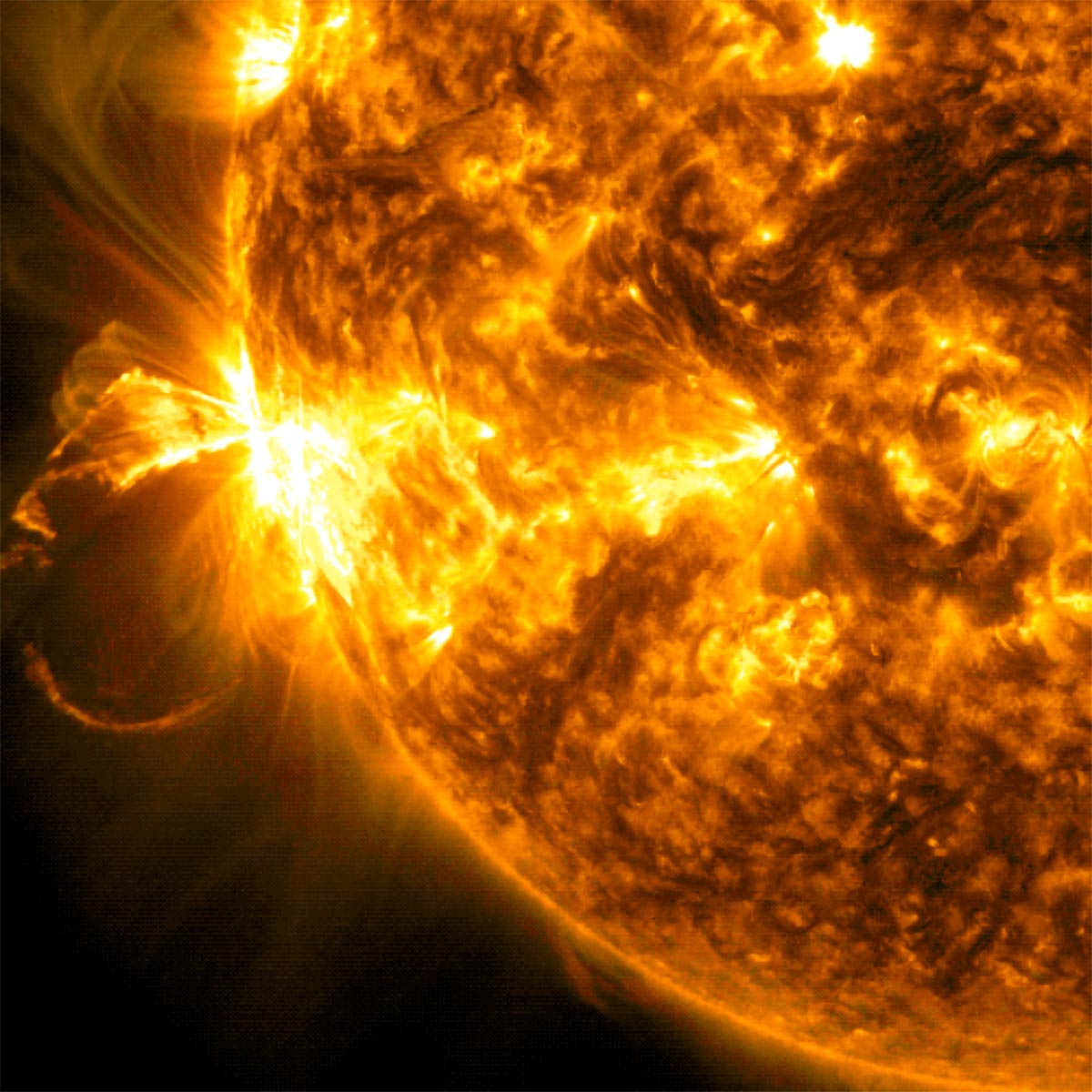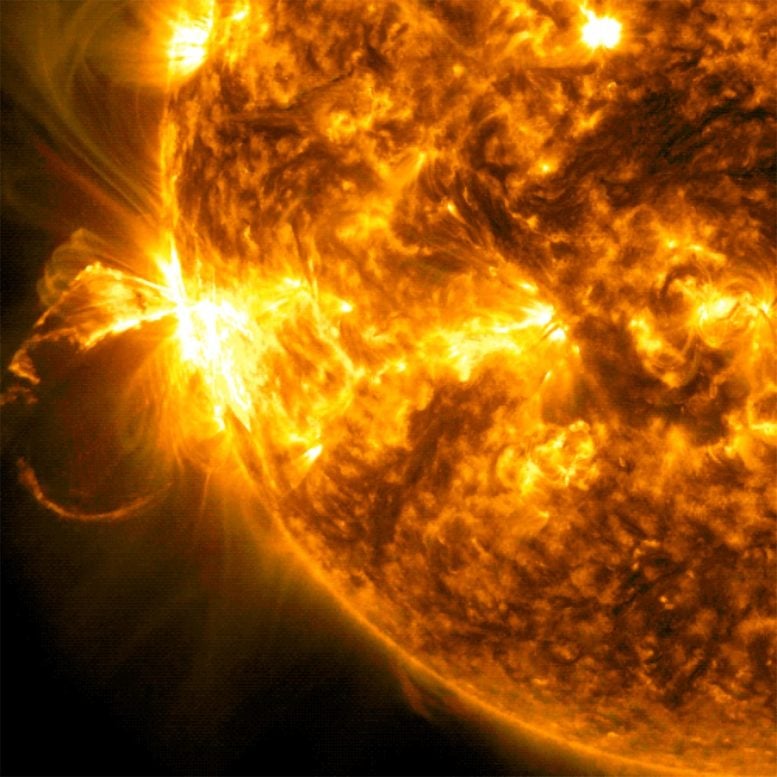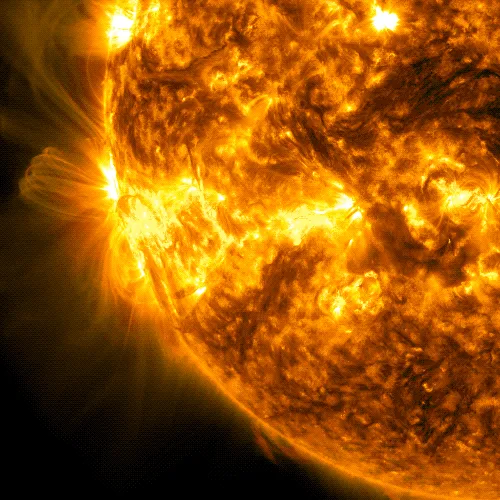

On October 23, 2024, NASA’s Solar Dynamics Observatory captured a powerful solar flare that peaked at 11:57 p.m. ET. This flare, classified as an X3.3, represents a high-intensity event capable of disrupting radio communications, navigation systems, and electrical grids, as well as posing risks to astronauts and spacecraft.
Solar flares are intense bursts of radiation and energy released from the Sun’s surface, triggered by the sudden release of magnetic energy stored in the Sun’s atmosphere. These flares often occur near sunspots, which are highly magnetic regions, and can range in intensity from mild to extremely powerful. Classified into categories such as C, M, and X, with X being the most intense, solar flares can produce energy levels equivalent to millions of hydrogen bombs exploding simultaneously.

The effects of solar flares can extend well beyond the Sun itself, impacting Earth by disrupting radio communications, GPS signals, and even electrical power grids. Flares also pose radiation risks for astronauts and spacecraft, especially during intense X-class events. Scientists study solar flares to better understand and predict “space weather,” helping to protect technology and human activities that may be vulnerable to these dramatic solar events.
NASA’s Solar Dynamics Observatory (SDO) is a satellite launched in 2010 to observe the Sun in unprecedented detail and help scientists understand the Sun’s influence on Earth and space weather. Equipped with advanced instruments, SDO continuously monitors the Sun’s atmosphere, capturing high-resolution images and data across multiple wavelengths. This allows it to track solar activity, such as flares, sunspots, and coronal mass ejections, in real time.
SDO’s observations are essential for studying the Sun’s magnetic field, solar winds, and energetic events that can impact technology on Earth, including communications and navigation systems. By providing insights into the mechanics of solar activity, SDO helps scientists predict and mitigate the effects of space weather on our technology-dependent society.